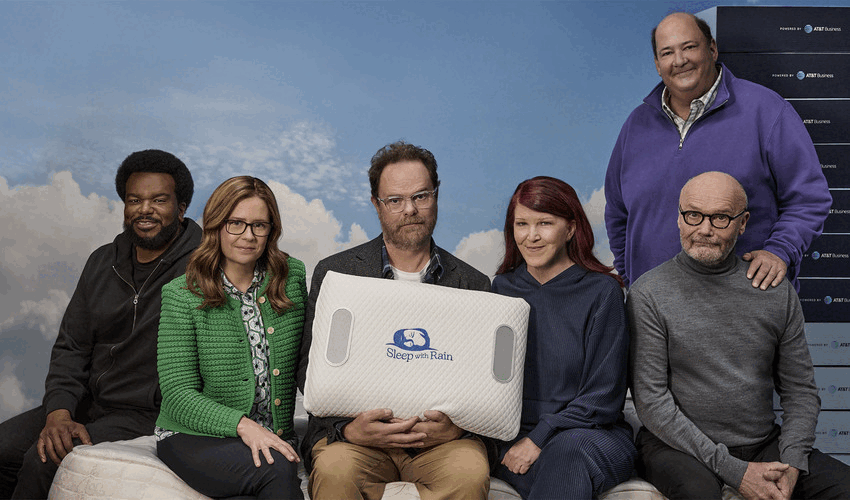TabMos Monthly Mobile Spotlight: Havas Media on the future of mobile ads (part two)
- Tuesday, May 7th, 2019
- Share this article:
 Mobile advertising company TabMo works with some of the worlds biggest brands to help them engage their audiences across mobile devices. Its DSP, Hawk, automates the process of buying mobile inventory and provides access to mobile data sources, geo-targeting technology and advanced mobile tracking solutions. TabMo provides creative support to ensure brands are communicating with their customers as effectively as possible. Through Hawk, advertisers can also activate digital out of home, connected TV and audio campaigns to further enhance their mobile advertising activity.
Mobile advertising company TabMo works with some of the worlds biggest brands to help them engage their audiences across mobile devices. Its DSP, Hawk, automates the process of buying mobile inventory and provides access to mobile data sources, geo-targeting technology and advanced mobile tracking solutions. TabMo provides creative support to ensure brands are communicating with their customers as effectively as possible. Through Hawk, advertisers can also activate digital out of home, connected TV and audio campaigns to further enhance their mobile advertising activity.
Each month we sit down with a leading industry figure to hear their thoughts on the mobile advertising market, how brands are currently using mobile and what we can expect from the future.
In the first of our series, we talked to Alex Boniface, digital client partner at Havas Media about what is needed to increase the number of advertising campaigns that are integrated across the different channels. In this, the second part of our discussion with Alex, we look at his visions for the future.
 Q. What technology are you most excited about and why in terms of its impact on (mobile) advertising? How will screen sizes impact what is possible for example? What does the 5G future look like?
Q. What technology are you most excited about and why in terms of its impact on (mobile) advertising? How will screen sizes impact what is possible for example? What does the 5G future look like?
I think the biggest trend we’ll start to see over the next few years will be the blurring of what ‘mobile’ really means. We’ve seen the industry start to flirt with this idea with things like smart watches, Google’s Lens product and even some of the AR products coming out from LeapMotion and Oculus Go. However, it’s early days – consumer adoption of these technologies has been low, and for all the fanfare around VR and AR, I can count on the fingers of one hand the number of really convincing applications.
Although these technologies have yet to embed themselves naturally in our daily behaviours, once they do, we will undoubtedly see a seismic shift in the way advertisers choose to engage with consumers. The trick, however, will be avoiding the gimmicks. Just because you can make an AR ad unit, doesn’t mean you should. Just because you can build an app that allows users to run around in some kind of virtual environment, doesn’t mean it’s what consumers are demanding. We just want things that are simple, that work, that seamlessly integrate with our lives and make them just that little bit easier.
It feels that the ‘future of mobile’ is less about how big or how bright or how colourful our screens can get, but what we can to do escape from the confines of a screen altogether. Voice is a really great example of this – consumer adoption, in this case, has been profound. It feels like everyone got an Amazon Echo for Christmas. But has voice technology really embedded itself in our daily lives? No. I suspect most people are simply using them as a Bluetooth speaker; the number standing in their kitchen every evening saying, “Alexa, what’s the best way to cook rice?” is pretty limited I imagine.
But the improvement of screen technology isn’t what I think will be really interesting; rather it’s how cheap screen manufacturing will become. Add to that the utopian/dystopian (insert your own view as desired) impact that 5G will have on the ability to connect the world around us – and our screen-dependent existences might change.
To set the scene, think of the last time you got a new smartphone – you would have transferred your entire digital existence through a cloud back-up to the new device within minutes. Instantly your old phone loses all emotional value. You went from protecting it with your life to not caring if it went under the wheels of a bus. We already live in a world of transient technology, but the confines of hardware will be superseded still further by mechanics like the cloud and fast mobile data that will transport us into a truly virtual, connected environment. The ‘device’ – a 5-inch, £1000 piece of glass in our pockets – loses its shine; value is transferred to software; to the cloud – and to our ability to interact with the world around us in ways that are still mainly the domain of vivid imaginations and science fiction.
Q. Are we heading for a world without phones…?
Imagine an environment where we are not tied to the phones in our pocket. Screens are everywhere – in pubs, restaurants and bars, in lifts, along escalators, on cupboard doors, even built seamlessly into the walls of offices – all of which you can engage and interact with.
You’re at a bus stop and need to check an email – just flick your digital presence onto the screen you’re sitting next to. You’re at an interview and want to show your job history – ‘log in’ to the wall and get your LinkedIn profile up. That doesn’t even have to happen from a phone – your entire digital existence would be stored online and activated through a chip embedded somewhere on your person.
Traditional smartphone hardware loses all value. Device IDs and unique identifiers are no longer an issue. We exist online and can appear on any device or screen anywhere in the world at any time. The ad opportunities could be incredible – but try attributing a sale in DCM back to an impression served in one of these new environments!
Q. What challenges does this future face?
There are other growing trends we can’t ignore. Screen-time is now a huge issue and has formed part of the daily public conversation. (“Awesome, I only spent 15 hours on social media last week, down 13 per cent!”). Mental health issues associated with phone addiction are tied to increasing public awareness about how we should better treat ourselves, as well as others around us.
From a business perspective, consumers are ad-blocking, GDPR has limited data portability, and we are moving into increasingly ad-free environments and trying to find new ways to connect. Privacy is now something about which the general public is acutely aware. How will that play out in a 5G world? Digital detoxes are growing in popularity. People are deleting their Facebook accounts. Some are even buying ‘brick’ phones to help focus their attention – perish the thought!
Where does all this go? It’s difficult to say at the minute. Screens and data will only become more ubiquitous in our lives, that I can guarantee – but we could start to see some push back. Tribes could form – ‘Screenists’ would embrace our connected world, almost to religious fervour, whilst ‘Screxiteers’ will embrace the values a disconnected and data-free world can provide.
Thanks again Alex for taking the time to talk to TabMo. The ‘Minority Report’ vision of the future, where everything has the potential to be a screen, is a fascinating prospect in terms of both the challenges and opportunities it presents.
Of course, we already have several more viable communication screens than we did ten years ago. As they have developed, a key objective for TabMo is optimising creatives across these different interfaces; what works on a laptop may be ignored on a smartphone or tablet for example, and vice versa. Creative technologies, such as dynamic creative optimisation (DCO) for example, have made huge strides in distributing alternative versions of an ad to different screens. However, there is still no substitute for human input – ultimately, it’s creative minds that know instinctively which message should go where.
Read the first part of TabMo’s interview with Alex Boniface of Havas Media here.














